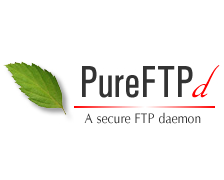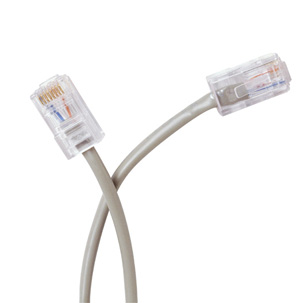1. Install Bind Chroot DNS server :
[root@centos64 ~]# yum install bind-chroot bind -y
2. Copy all bind related files to prepare bind chrooted environments :
[root@centos64 ~]# cp -R /usr/share/doc/bind-*/sample/var/named/* /var/named/chroot/var/named/
3. Create bind related files into chrooted directory :
[root@centos64 ~]# touch /var/named/chroot/var/named/data/cache_dump.db
[root@centos64 ~]# touch /var/named/chroot/var/named/data/named_stats.txt
[root@centos64 ~]# touch /var/named/chroot/var/named/data/named_mem_stats.txt
[root@centos64 ~]# touch /var/named/chroot/var/named/data/named.run
[root@centos64 ~]# mkdir /var/named/chroot/var/named/dynamic
[root@centos64 ~]# touch /var/named/chroot/var/named/dynamic/managed-keys.bind
4. Bind lock file should be writeable, therefore set the permission to make it writable as below :
[root@centos64 ~]# chmod -R 777 /var/named/chroot/var/named/data
[root@centos64 ~]# chmod -R 777 /var/named/chroot/var/named/dynamic
5. Set if you do not use IPv6 :
[root@centos64 ~]# echo 'OPTIONS="-4"' >> /etc/sysconfig/named
6. Copy /etc/named.conf chrooted bind config folder :
[root@centos64 ~]# cp -p /etc/named.conf /var/named/chroot/etc/named.conf
7.Configure main bind configuration in /etc/named.conf. Append the ehowstuff.local information to the file :
[root@centos64 ~]# vi /var/named/chroot/etc/named.conf
a. Add bind DNS IP addresses :
..
listen-on port 53 { 127.0.0.1;192.168.2.62;192.168.2.63; };
..
b. Create forward and reverse zone :
..
..
zone "ehowstuff.local" {
type master;
file "ehowstuff.local.zone";
};
zone "2.168.192.in-addr.arpa" IN {
type master;
file "192.168.2.zone";
};
..
..
Full configuration for named.conf :
//
// named.conf
//
// Provided by Red Hat bind package to configure the ISC BIND named(8) DNS
// server as a caching only nameserver (as a localhost DNS resolver only).
//
// See /usr/share/doc/bind*/sample/ for example named configuration files.
//
options {
listen-on port 53 { 127.0.0.1;192.168.2.62;192.168.2.63; };
listen-on-v6 port 53 { ::1; };
directory "/var/named";
dump-file "/var/named/data/cache_dump.db";
statistics-file "/var/named/data/named_stats.txt";
memstatistics-file "/var/named/data/named_mem_stats.txt";
allow-query { localhost; };
recursion yes;
dnssec-enable yes;
dnssec-validation yes;
dnssec-lookaside auto;
/* Path to ISC DLV key */
bindkeys-file "/etc/named.iscdlv.key";
managed-keys-directory "/var/named/dynamic";
};
logging {
channel default_debug {
file "data/named.run";
severity dynamic;
};
};
zone "." IN {
type hint;
file "named.ca";
};
zone "ehowstuff.local" {
type master;
file "ehowstuff.local.zone";
};
zone "2.168.192.in-addr.arpa" IN {
type master;
file "192.168.2.zone";
};
include "/etc/named.rfc1912.zones";
include "/etc/named.root.key";
8. Create Forward and Reverse zone files for domain ehowstuff.local.
a) Create Forward Zone :
[root@centos64 ~]# vi /var/named/chroot/var/named/ehowstuff.local.zone
;
; Addresses and other host information.
;
@ IN SOA ehowstuff.local. hostmaster.ehowstuff.local. (
2013042201 ; Serial
43200 ; Refresh
3600 ; Retry
3600000 ; Expire
2592000 ) ; Minimum
; Define the nameservers and the mail servers
IN NS ns1.ehowstuff.local.
IN NS ns2.ehowstuff.local.
IN A 192.168.2.62
IN MX 10 mail.ehowstuff.local.
centos64 IN A 192.168.2.62
mail IN A 192.168.2.62
ns1 IN A 192.168.2.62
ns2 IN A 192.168.2.63
b) Create Reverse Zone :
[root@centos64 ~]# vi /var/named/chroot/var/named/192.168.2.zone
;
; Addresses and other host information.
;
@ IN SOA ehowstuff.local. hostmaster.ehowstuff.local. (
2013042201 ; Serial
43200 ; Refresh
3600 ; Retry
3600000 ; Expire
2592000 ) ; Minimum
2.168.192.in-addr.arpa. IN NS centos64.ehowstuff.local.
62.2.168.192.in-addr.arpa. IN PTR mail.ehowstuff.local.
62.2.168.192.in-addr.arpa. IN PTR ns1.ehowstuff.local.
63.2.168.192.in-addr.arpa. IN PTR ns2.ehowstuff.local.
9. Start Bind service :
[root@centos64 ~]# /etc/init.d/named start
Generating /etc/rndc.key: [ OK ]
Starting named: [ OK ]
10. Configure Bind auto start at boot :
[root@centos64 ~]# chkconfig --levels 235 named on
11. Test and verify Bind DNS setup :
a. Test and verify using host command :
[root@centos64 ~]# host -t ns ehowstuff.local
ehowstuff.local name server ns1.ehowstuff.local.
ehowstuff.local name server ns2.ehowstuff.local.
[root@centos64 ~]# host -t mx ehowstuff.local
ehowstuff.local mail is handled by 10 mail.ehowstuff.local.
b. Test and verify using nslookup command :
[root@centos64 ~]# nslookup
> set type=any
> ehowstuff.local
Server: 192.168.2.62
Address: 192.168.2.62#53
ehowstuff.local
origin = ehowstuff.local
mail addr = hostmaster.ehowstuff.local
serial = 2013042201
refresh = 43200
retry = 3600
expire = 3600000
minimum = 2592000
ehowstuff.local nameserver = ns1.ehowstuff.local.
ehowstuff.local nameserver = ns2.ehowstuff.local.
Name: ehowstuff.local
Address: 192.168.2.62
ehowstuff.local mail exchanger = 10 mail.ehowstuff.local.
> exit
c. Test and verify using dig command :
[root@centos64 ~]# dig ehowstuff.local
; < <>> DiG 9.8.2rc1-RedHat-9.8.2-0.17.rc1.el6_4.4 < <>> ehowstuff.local
;; global options: +cmd
;; Got answer:
;; ->>HEADER< <- opcode: QUERY, status: NOERROR, id: 6958
;; flags: qr aa rd ra; QUERY: 1, ANSWER: 1, AUTHORITY: 2, ADDITIONAL: 2
;; QUESTION SECTION:
;ehowstuff.local. IN A
;; ANSWER SECTION:
ehowstuff.local. 2592000 IN A 192.168.2.62
;; AUTHORITY SECTION:
ehowstuff.local. 2592000 IN NS ns1.ehowstuff.local.
ehowstuff.local. 2592000 IN NS ns2.ehowstuff.local.
;; ADDITIONAL SECTION:
ns1.ehowstuff.local. 2592000 IN A 192.168.2.62
ns2.ehowstuff.local. 2592000 IN A 192.168.2.63
;; Query time: 1 msec
;; SERVER: 192.168.2.62#53(192.168.2.62)
;; WHEN: Wed Apr 3 00:03:40 2013
;; MSG SIZE rcvd: 117
courtesy: ehowstuff.com/how-to-install-and-configure-bind-chroot-dns-server-on-centos-6-4-vps/




